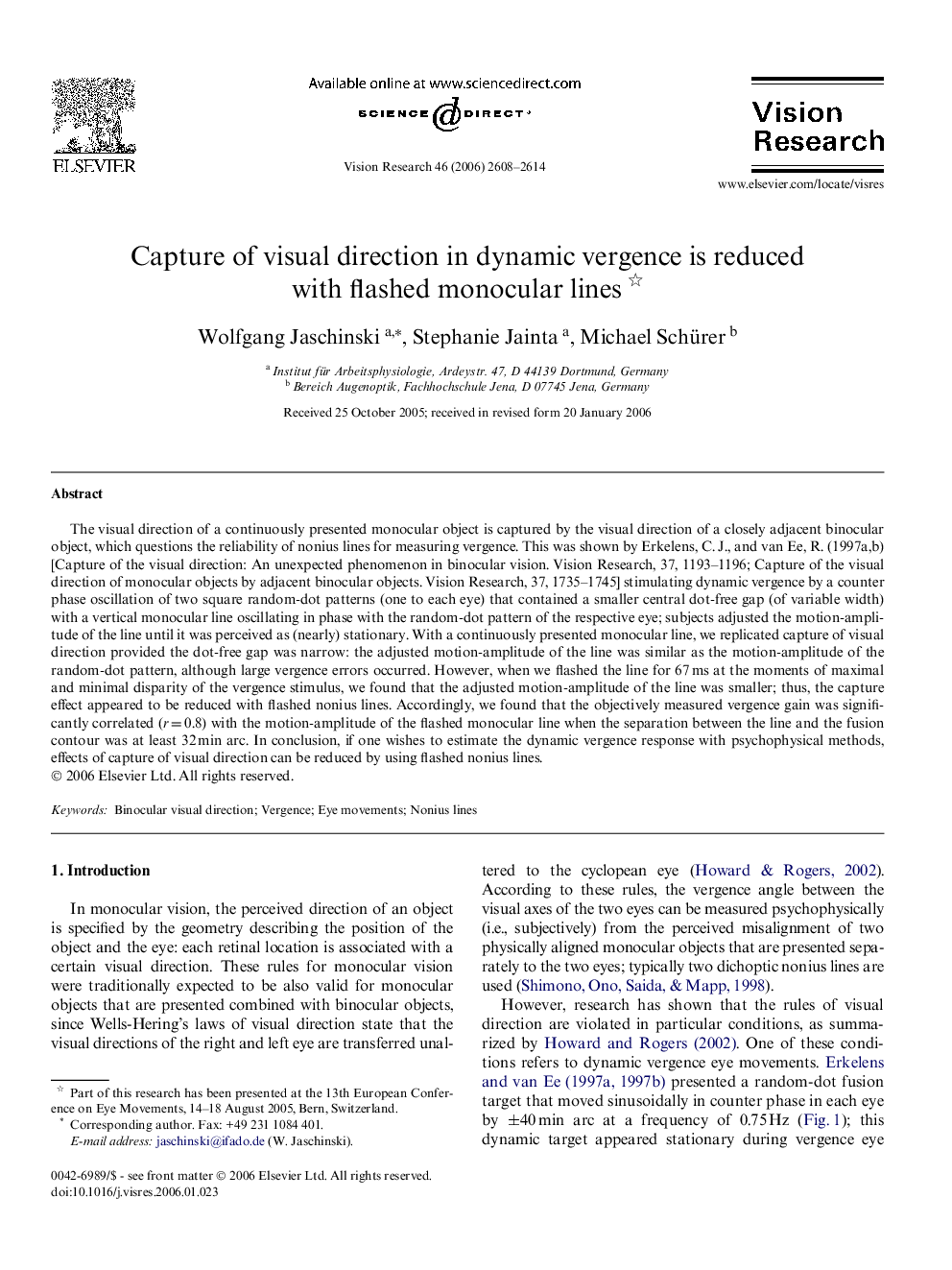| Article ID | Journal | Published Year | Pages | File Type |
|---|---|---|---|---|
| 4036242 | Vision Research | 2006 | 7 Pages |
The visual direction of a continuously presented monocular object is captured by the visual direction of a closely adjacent binocular object, which questions the reliability of nonius lines for measuring vergence. This was shown by Erkelens, C. J., and van Ee, R. (1997a,b) [Capture of the visual direction: An unexpected phenomenon in binocular vision. Vision Research, 37, 1193–1196; Capture of the visual direction of monocular objects by adjacent binocular objects. Vision Research, 37, 1735–1745] stimulating dynamic vergence by a counter phase oscillation of two square random-dot patterns (one to each eye) that contained a smaller central dot-free gap (of variable width) with a vertical monocular line oscillating in phase with the random-dot pattern of the respective eye; subjects adjusted the motion-amplitude of the line until it was perceived as (nearly) stationary. With a continuously presented monocular line, we replicated capture of visual direction provided the dot-free gap was narrow: the adjusted motion-amplitude of the line was similar as the motion-amplitude of the random-dot pattern, although large vergence errors occurred. However, when we flashed the line for 67 ms at the moments of maximal and minimal disparity of the vergence stimulus, we found that the adjusted motion-amplitude of the line was smaller; thus, the capture effect appeared to be reduced with flashed nonius lines. Accordingly, we found that the objectively measured vergence gain was significantly correlated (r = 0.8) with the motion-amplitude of the flashed monocular line when the separation between the line and the fusion contour was at least 32 min arc. In conclusion, if one wishes to estimate the dynamic vergence response with psychophysical methods, effects of capture of visual direction can be reduced by using flashed nonius lines.
